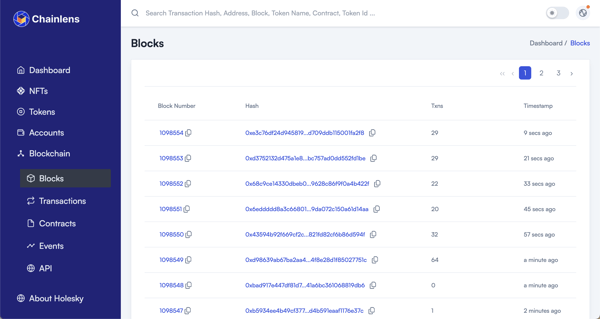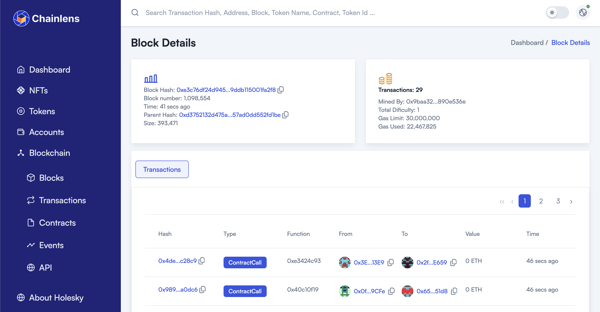Blockchain Explained
Your guide to transactions, smart contracts and more
What is a block in a blockchain?
The blockchain is a data structure that consists of a number of blocks linked to each other. Each block contains a number of transactions which represent the activity that’s taking place on that blockchain.
A block consists of a snapshot of transactions that took place over a period of time. Network nodes group transactions into blocks, and if accepted by the blockchain network they are appended to the blockchain.
This job of selecting transactions for inclusion into a block is performed by a specific type of node on the network known as a validator or miner. These nodes are responsible for aggregating transactions which are sent to the blockchain, validating them and are selected to propose the next block on the blockchain (nodes are covered in What are blockchain nodes?).
The manner in which a block is selected depends on the consensus mechanism underpinning the network. Most public networks use proof of stake, but some use proof of work such as the Bitcoin network. Consensus mechanisms are an in-depth topic in themselves, and for the purpose of interpreting most information contained on-chain, you do not need to understand how they work.
By navigating into the block view in a block explorer like Chainlens, you can view a list of the most recent blocks that have been added to the blockchain. There are a few key attributes of each block — the block number, the block hash, the timestamp and its transaction count.

Blocks are numbered sequentially from 0, and you can expect to see millions or billions of blocks on any widely used blockchain.
Each block has a block hash which uniquely identifies a block. The hash is a unique fingerprint that is generated cryptographically to identify a block. No two blocks can ever be identical, even if they were to contain the same transactions within them. A hash is a cryptographic technique used to generate this fingerprint.
This block hash is displayed in hexadecimal, in our specific example as 0x945…b3d74, where the ellipses represent shorthand for the block hash, its full value is 0x945eb660aee95fb571272530d363409d5770ecc0cf5831a889dfafd8d9fb3d74.
The timestamp is the point at which the block was mined or validated by the node that produced it.
If you click on the block, you will navigate to the block details page which provides the information on the specific block. In this view, the only information you need to pay attention to is the individual transactions contained within the block.

Summary
A block groups transactions together on a blockchain. It has three key attributes — its number, hash and transaction count. The hash is a fingerprint that uniquely identifies that block and the transactions contained within it.
Become a web3 native by reading all of our Blockchain Explained articles.
Are you ready to adopt blockchain technology?
Our products and services make blockchain technology accessible for everyone
Chainlens Blockchain Explorer
SaaS and on-prem blockchain data and analytics platform for Ethereum compatible, layer 2 and Polkadot networks.
Enterprise blockchain support
Production support for public and private blockchain networks built using Quorum and Hyperledger Besu clients.
Web3 Labs Newsletter
With the Web3 industry moving at such a fast pace, it can be time consuming to keep track of all the latest news and events.
Subscribe to our newsletter and you'll receive regular insights and updates relating to enterprise blockchain in one place.
